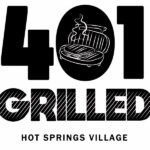By Andy Kramek, August 15, 2021
Did the FRATF Miss Something?
Everyone knows that the POA has a problem with its finances. The basic problem is actually pretty simple to state, much harder to solve.
As of the June 2021 Financial Statement, there were 8,912 improved lots in good standing (i.e. paying their assessment) and just 90 ‘delinquent’. At the current assessment rate of $69.26 per month that equates to an income of $7,406,941.44 per year. At the same time, there were 14,252 unimproved lots in good standing (i.e. paying their assessment) and 7,533 delinquent. At the current assessment rate of $39.97 per month that equates to an income of $6,835,829.28 per year.
Since it is generally, but not entirely, true that most unimproved lots are owned by non-residents the often-repeated statement that “non-residents pay more than half of assessments” is, clearly, not true!
Unimproved lots account for just under 48% of assessment income, and since at least some of those are owned by residents, the true non-resident contribution is probably closer to 40% than 50%!
On the other side of the equation, revenue is lost when owners do not pay their assessments. The 90 delinquent improved lots will cost the POA $74,800.80 in lost revenue this year. Meanwhile, the 7,533 unimproved lots will cost the POA $3,613,128.12 in lost revenue this year. In addition, the POA owned 3,443 lots which, of course, do not produce any income and so represent a further $2,861,546.16 in potential lost revenue – not forgetting, of course, that presumably the POA still has to pay property taxes on these lots, so there is an actual cost in addition to the potential loss. The total income for the year from lots in good standing is, therefore, $14,242,770.72 while a further $6,549,475.08 is lost to delinquent and POA-owned lots.
Now, in order to pay the POA Staff, the 2021 budget is just over $18.6 million. So before any other expenditure occurs, the total assessment income is about $4.5 million short of meeting that cost.
Of course, the POA has other sources of revenue (amenity fees, utilities, etc) to help cover the shortfall. FRATF (despite their Mission Statement) appeared to be totally focused on addressing the accumulated $6.7 million deferred maintenance problem.
Somehow they appear to have overlooked the fact that the only guaranteed income the POA has (i.e. assessments) is already $4.5 million short of meeting just one year’s compensation bill. Furthermore, their proposed increase of $10 for improved, and $2.50 for unimproved, lots per year for three years will only generate an additional $1.5 million per year which does not even fill that gap, let alone provide additional monies for maintenance.
To cut to the chase, the basic problem is that the compensation bill is already taking up too much of the POA’s resources, yet we know we need to pay people more in order to improve retention and quality of staff. So the gap between available income and cost of compensation is likely going to widen even more.
The solution, if there is one, is going to require much more than simply increasing assessments and amenity fees. A fundamental re-think is required to decide just how the POA is run, what its role should be in the future, and how it should be funded.
Unfortunately, FRATF did none of these and appears to have ended up trying to justify an assessment increase that will not actually address the deferred maintenance issue, let alone anything else.
FRATF’s Most Significant Recommendation
Incidentally, the most significant recommendation was hidden in the “small print” right at the end of the report under “Other Recommendations – Declarations”– I quote:
“It is essential that we obtain an affirmative vote for an assessment increase above the Southern CPI level, starting in 2027. This is the next time a Declaration change can take effect. Without this flexibility, proected (sic) revenue growth will continue to lag. We will have to have to conduct another exercise of this type (FRATF evaluation) in 2029/2030.”
In other words, they are resurrecting the proposed declaration change that was defeated in 2020. This would have removed the requirement for an affirmative vote by all property owners in order to increase assessments by more than the Southern CPI. It would effectively give the POA the ability to raise assessments by any amount that they choose. The basic reason that we have a two-tier assessment at all was that the POA wanted to raise rates by more than the CPI in 2015. That vote failed because non-resident owners would not vote for it and the POA could not even get a quorum. The work-around was to introduce a two-tier system which pushed the majority of the increase on to improved lots (i.e. residents) while leaving unimproved lots at a much lower level. That one passed because the number of unimproved lot owners in good standing, who voted to pass the increase on to residents, was sufficient to carry the vote. Whether that could happen again is not quite as clear-cut today as it was six years ago. The resident population has increased while the number of non-residents in good standing has fallen. So the result of an assessment vote might not be quite as predictable as it has been in the past. Interestingly the POA just acquired an additional 2,000 lots which, while it cannot actually vote them, can be used to ensure that the requirement for a quorum is met! So the next vote will not actually require that that a true quorum of property owners be obtained since the POA can now add over 5,000 votes to the count.
* * *
Thank you for reading. If you like, please comment below.We love to hear your opinion, but comments must be made using your first and last real name, or they will not be accepted. If you would like to submit an article for publication, please contact us through this website. Be sure to bookmark this website. Click here to visit the Hot Springs Village People Facebook Group.











Gene Garner
08/15/2021 — 11:53 am
You’re right Andy, the unimproved lot owners were the deciding factor. There were almost twice as many unimproved votes in 2015 as improved lot owners and they had no “skin in the game”.
Another overlooked factor is the CCI vote. If CCI doesn’t go along with the increase it fails.
Notice Section 5 says “each class of members”.
Section 5. Increase in Annual Assessment With Vote of Members. The annual assessment may be increased prospectively from the amounts set forth in any year without limitation on the amount of such increase by a majority vote of each class of members voting in person or by proxy at a meeting duly called for such purpose.
Amended effective April 20, 2013.
Of course I don’t know how CCI will vote but it would be in their best interest financially to go along with the increase.—Gene
Andy Kramek
08/15/2021 — 12:54 pm
Good point Gene. CCI could stop any increase cold if they so desired but, as you point out, their interest generally lies in the other direction. Thankfully, while POA-owned lots can be used to achieve a quorum, they cannot be used to actually vote on the issue.
Stephen Rust
08/15/2021 — 2:05 pm
Been trying to tell people for weeks and months that this assessment increase is not going to solve our problem. Also been trying to tell them this board is headed down the same path as the old leadership. Hopefully people will listen to your very well researched and thought out post.
Andy Kramek
08/15/2021 — 2:26 pm
I saw your recent commentary on NextDoor (which some took the wrong way I know) but you absolutely nailed it! Maybe you should post it here too?
Derek Gordon
08/15/2021 — 8:32 pm
Thank you Andy, that was a great and sobering review of our current situation …… Thank you for helping all of us understand the true facts…..I hope all can see this on ND……they need to understand the real facts…..I do agree their are to many layers of management … a much smaller management staff is more efficient processe and saves money….all departments….just my opinion.
Kathy Henderson Oram
08/15/2021 — 2:34 pm
We need to reduce upper staff greatly-those above level 10!
Tom Blakeman
08/15/2021 — 4:06 pm
One of the biggest things they missed was figuring out how to turn golf into a cash generator every year instead of a loss. Hint: It can’t be done by continuing the practices which have been in use the last 15 years.
Andy Kramek
08/15/2021 — 6:53 pm
Alas Tom you are, as usual, correct. As so many of us keep saying there does not seem to be any appetite in the POA to acknowledge that things might not be perfect or even that there might possibly be a need to make changes to current practices.